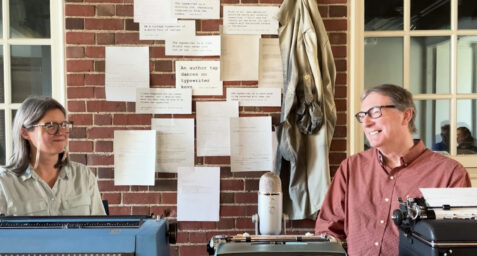Exploring Boston’s Heritage: Key Historic Landmarks
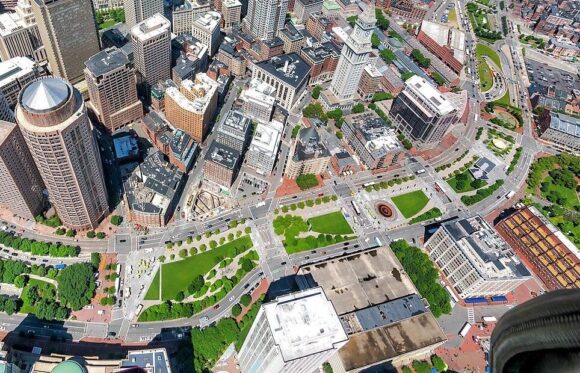
Categories
BostonBoston is a treasure trove of stories. The city was founded in 1630, making it one of the oldest cities in the US, and therefore, a city of firsts. The first public school (the Boston Latin School), the first newspaper (The Boston News-letter), the first public library (the Boston Public Library), and the first underground subway system now known as the MBTA originate from Boston.
A city steeped in history is bound to hold a number of notable landmarks. From architecture to landscapes, here’s a look at just five of the City’s many significant features.
1. The Boston Athenaeum
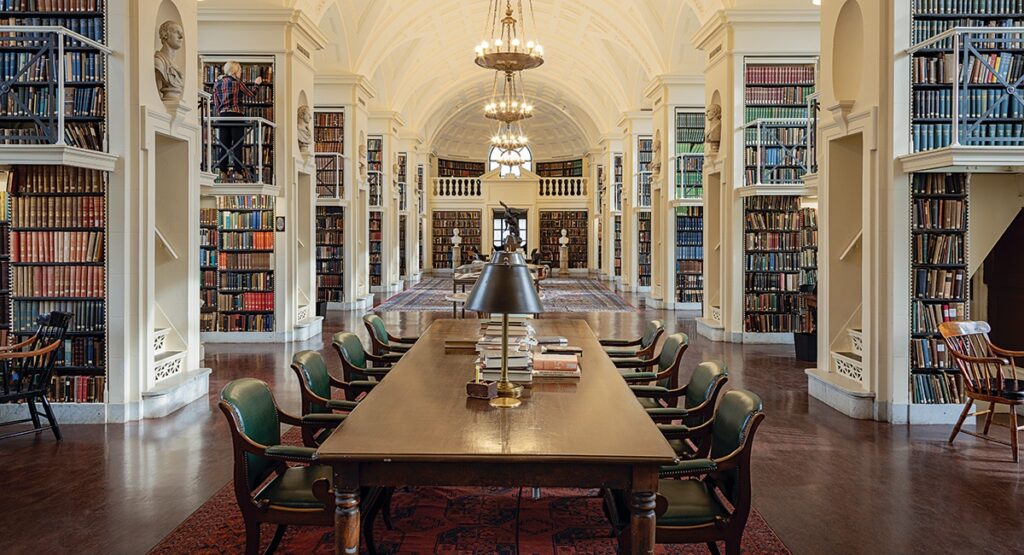
The Athenaeum is an independent library, museum, and cultural landmark in downtown Boston. Founded in 1807 by a group of Bostonians who had previously formed the Anthology Society in 1805, the vision was to create an establishment “combining the advantages of a public library [and] containing the great works of learning and science in all languages.” The Athenaeum contains 100,000 rare books, maps, and manuscripts, as well as 100,000 works of art, ranging from paintings and sculptures to prints and photographs.
The library moved several times before settling in its current location on Beacon Street. Its building, designed by Edward Clarke Cabot and opened in 1849, is a National Historic Landmark. The Athenaeum was renovated and expanded several times, most recently in 2022. Today, the Athenaeum hosts events like talks, tours, and workshops.
Interested in bookbinding? You can learn how with our bookbinding program.
2. King’s Chapel Burying Ground
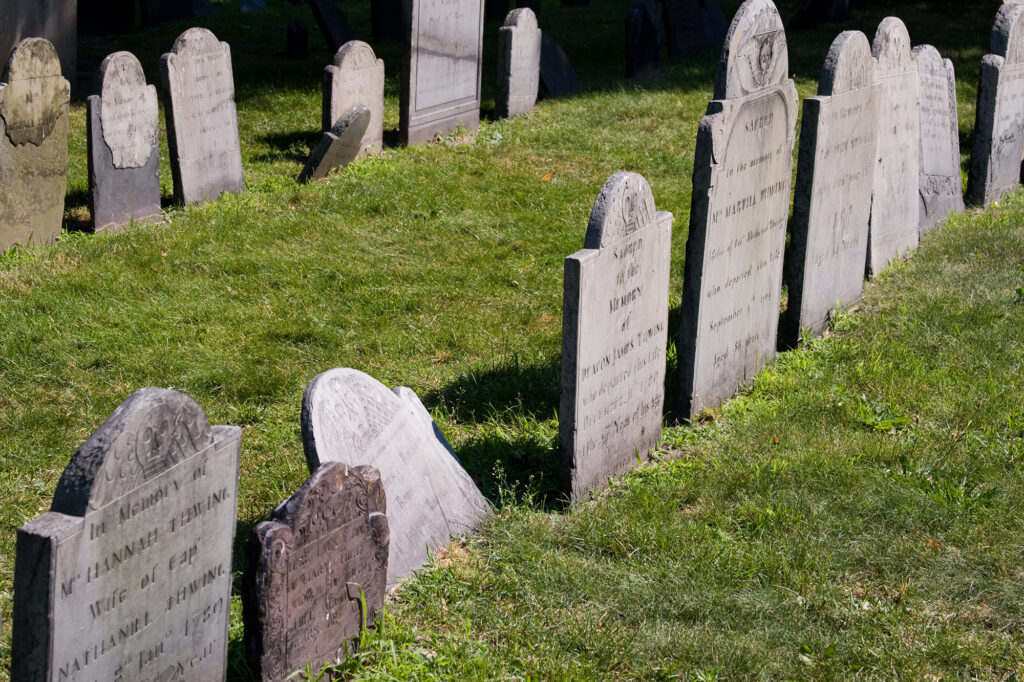
Established in 1630 at the same time as Boston’s founding, King’s Chapel Burying Ground is the city’s oldest cemetery. The gravestones bear iconography commonly found in the 17th and 18th centuries: death’s heads (winged skulls), soul effigies (winged faces), and willow and urns.
One of the cemetery’s most intriguing gravestones is for Joseph Tapping, a shopkeeper. His slate gravestone features a battle between Death snuffing out the candle of life and Father Time holding an hourglass, symbolizing life’s fleeting nature.
Notable people buried at King’s Chapel include John Winthrop, Massachusetts’ first governor; Hezekiah Usher, the first printer and publisher in the state; and Mary Chilton, the first woman to step off the Mayflower.
3. The Big Dig
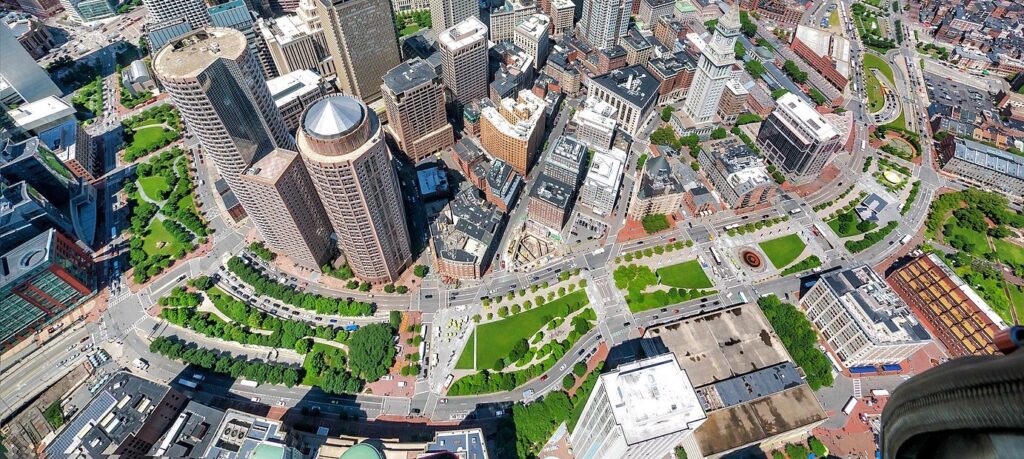
The Big Dig aimed to solve Boston’s traffic problems and re-stitch together separated neighborhoods caused by the Central Artery, an elevated highway that ran through the city’s downtown. Consisting primarily of a 3.5-mile-long underground tunnel, the project also included the construction of several new bridges, highways, and tunnels and the creation of a linear park, the Rose Kennedy Greenway.
The controversial project was criticized for its cost, delays, and construction flaws, such as leaking tunnels and falling ceiling tiles. Planning began in 1982, but construction did not take place until September 1991. The Big Dig was completed in 2007 after nearly 15 years of construction. It remains the most expensive infrastructure project in the U.S. to date, costing $24.3 billion in today’s dollars. Despite the many challenges, the project is praised for its positive impacts, and is still a model for urban design that cities around the world are continuing to replicate.
4. Boston Public Library
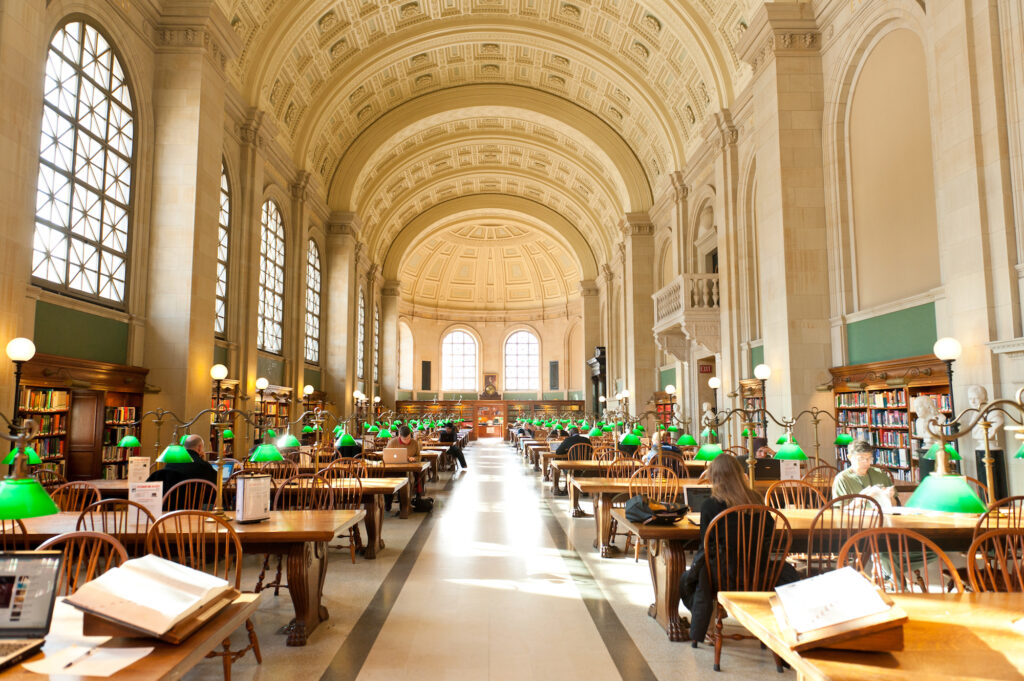
Knowledge is power—what better way to soak it in than a visit to the Boston Public Library (BPL)? It is a library, architectural wonder, and home to GBH’s radio studio. Established in 1848, the BPL was the first large free municipal library in the United States.
The first building on Mason Street opened in 1854, but the library quickly outgrew the space. The current Central Library in Copley Square was built in 1895 by architect Charles Follen McKim and recognized as a National Historic Landmark in 1986. The McKim building underwent a renovation project that spanned from 1991 to 2002, which included the restoration of public spaces and mechanical systems.
Today, the BPL has a collection of over 23 million items. You can check out books, its expansive zine collection, and downloadable and streamable eBooks, eAudiobooks, and music, and videos.
5. Emerald Necklace
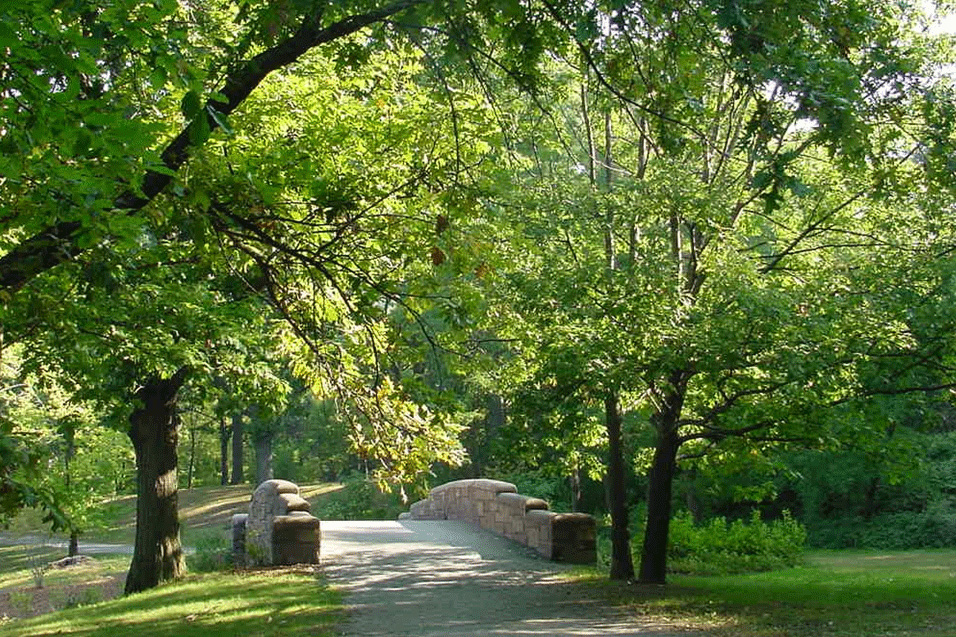
In cities like Boston, green spaces are welcome. Luckily, you can venture out to the Emerald Necklace, a seven-mile chain of parks including Back Bay Fens, The Riverway, Olmstead Park, Jamaica Pond, Franklin Park, Boston Common, and Arnold Arboretum. The Emerald Necklace was designed by landscape architect Frederick Law Olmsted between 1878 and 1896.
One of the most beloved spots is Arnold Arboretum, a 281-acre refuge full of diverse plants and wildlife established in 1872, making it the oldest public arboretum in North America. Boasting close to 16,000 plants ranging from lilacs to bonsai, the Arnold Arboretum is an inviting space year round.
Thanks to Olmstead, these urban oases exist for you to take a break from the bustle of the busy city.
Learn More About North Bennet Street School
Now that you’ve read about some great design features of Boston, why not explore the trades you can learn today?

